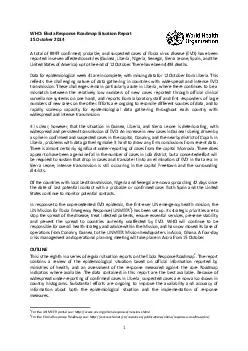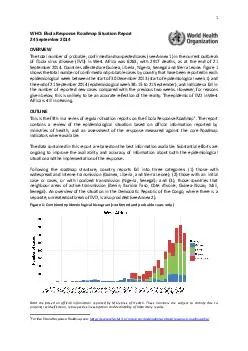PDF-tKZZZ K s E h Kd K d s d
Author : tawny-fly | Published Date : 2014-11-14
COUNTRIES WITH WIDESPREAD AND INTENSE TRANSMISSION The upward epidemic trend continues in Gu inea Liberia and Sierra Leone 973 probable confirmed and suspected cases
Presentation Embed Code
Download Presentation
Download Presentation The PPT/PDF document "tKZZZ K s E h Kd K..." is the property of its rightful owner. Permission is granted to download and print the materials on this website for personal, non-commercial use only, and to display it on your personal computer provided you do not modify the materials and that you retain all copyright notices contained in the materials. By downloading content from our website, you accept the terms of this agreement.
tKZZZ K s E h Kd K d s d : Transcript
COUNTRIES WITH WIDESPREAD AND INTENSE TRANSMISSION The upward epidemic trend continues in Gu inea Liberia and Sierra Leone 973 probable confirmed and suspected cases of EVD and 4484 deaths have been reported up to the end of 12 October 2014 by the M. COUNTRIES WITH WIDESPREAD AND INTENSE TRAN SMISSION The upward epidemic trend continues in Sierra Leone and most probably also in Liberia By contrast the situation in Guinea appears to be more stable though it must be emphasized that in the context COUNTRIES WITH WIDESPREAD AND INTENSE TRANSMISSION The upward epidemic trend continues in Sierra Leone and most probably also in Liberia However the situation in Guinea although still of grave concern appears to have stabilized between 75 and 100 ne
Download Document
Here is the link to download the presentation.
"tKZZZ K s E h Kd K d s d "The content belongs to its owner. You may download and print it for personal use, without modification, and keep all copyright notices. By downloading, you agree to these terms.
Related Documents


